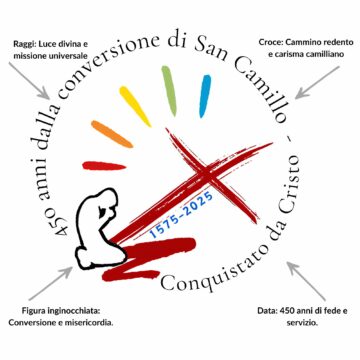 In recent decades a term has entered the collective vocabulary and to such an extent that it does not need a translation. This term refers to an authentic pathology that is widespread in many occupational categories. Amongst these categories there is that of socio/health-care workers who are the most afflicted by it because they are exposed to the stress of a direct relationship with users of their services who are in a state of malaise. These workers seem to be more pre-disposed to burn out, with a rapid decline in their psycho-physical resources and an equally rapid worsening of their professional performance.
In recent decades a term has entered the collective vocabulary and to such an extent that it does not need a translation. This term refers to an authentic pathology that is widespread in many occupational categories. Amongst these categories there is that of socio/health-care workers who are the most afflicted by it because they are exposed to the stress of a direct relationship with users of their services who are in a state of malaise. These workers seem to be more pre-disposed to burn out, with a rapid decline in their psycho-physical resources and an equally rapid worsening of their professional performance.
In the view of Maslach, three dimensions can be highlighted in the process of burn out: emotional exhaustion, depersonalisation, and personal fulfilment. The need to meet the perceived requests of users of their services leads to an impoverishment of these workers’ own emotional and affective resources, to the point of feeling emotionally drained. With users a detached and cold relationship is installed, at times of a cynical character, which seeks to create a relational distance that is sufficient to assure a presumed self-protection: to the users an impersonal professional service alone is given. In its turn, this is not sufficient to assure professional fulfilment and this provokes in these workers a perception of inadequacy and inefficiency, with a fall in self-esteem and a feeling of failure.
This syndrome has different manifestations according to the areas that are afflicted by it and the signs that highlight it. At a physical-somatic level, gastro-intestinal complaints in the absence of real physiological damage are common, as are asthenia, headaches or widespread pains, maladies of the skin such as dermatitis or allergies, and alterations in alimentation or rest patterns. At a psychological level, anger and a negative perception of the real are evident, as are isolation and mood change; a fall in having ideals and a sense of being cold to the point of a lack of a feeling of touch; and a reduction in self-esteem and a sense of incapacity. Lastly, at the level of behaviour, an incapacity to control one’s own reactions with frequent clashes or bursts of rage are frequent, as are absenteeism at work or weak participation in it; and dependence on stimulants (alcohol, tobacco, medical products) which are seen as a solution to the person’s exhaustion.
Subjective and objective elements are involved in the establishment of burn out. One can say that side by side with a predisposition or natural inclination, the presence of structural and organisational situations which are its detonator, and without which the individual could have survived the occupational stress, is also needed. Amongst the subjective factors, we find individual capacities, beliefs, life experiences, age and personality, as well as social relationships and the ability to establish relationships with users and colleagues, hobbies, and a capacity to diversify interests. There are many objective factors that can unleash burn out. Some are connected with organisation (reforms, resources, rounds, clarity of regulations, flows of internal communication, attending meetings, career pathways). Others relate to the users and what they want, which often involves threatened legal action, and yet others are connected with conditions of work and workloads and rhythms, which are often competitive. Then there are those factors connected with a lack of decision-making power and having to be subjected to previously established protocols, with a lack of economic appreciation, as well as an absence of fairness between the socio/health-care workers and a conflict of values. Lastly, a contributing factor to burn out is the kind of users with whom workers interact, especially those cases where dedication and commitment are powerless in the face of their needs and the distance between results and expectations is large (terminal patients who are often young people or children; the victims of incest or abandonment; psychotics; the gravely handicapped and elderly people).
A survey carried out amongst workers at the Padre Luigi Tezza Hospice allowed their level of burn out to be measured in line with three principal dimensions: emotional exhaustion, depersonalisation, and personal fulfilment. The analysis of the data focused on some processes of prevention starting with the practical lived experience of an individual or group of individuals. Indeed, whereas the dimensions of emotional exhaustion and of depersonalisation were low in about two-thirds of the members of groups, personal fulfilment was high in only 17% of the workers with the remaining 83% having an average or low perception of their own fulfilment. Seeing this as a factor that predicts a risk of burn out, it was believed advisable to prevent it through adequate strategies in relation to both individual workers and the organisation of work.
Starting with the results of the survey, the following initiatives were suggested: clarifying objectives and amending them according to the resources that are available and sharing with colleagues the tasks that are most burdensome in an emotional sense, and establishing a limitation to the readiness to help patients and their families. At an organisational level, the following was proposed: offering the possibility of ongoing formation/supervision; rewarding workers for good work; allowing a rotation of personnel; improving team communication; and sharing a model centred round the person rather than the illness. Lastly, convivial moments outside work were proposed at a relational level in order to improve the climate of interpersonal relationships.
The strategy adopted at the Padre Luigi Tezza Hospice reproduces some of the recommendations for the prevention of burn out that are widely known about – nothing new, but awareness that a minute of prevention is better than an hour of treatment!











Camillians on Facebook
Camillians on Twitter
Camillians on Instagram